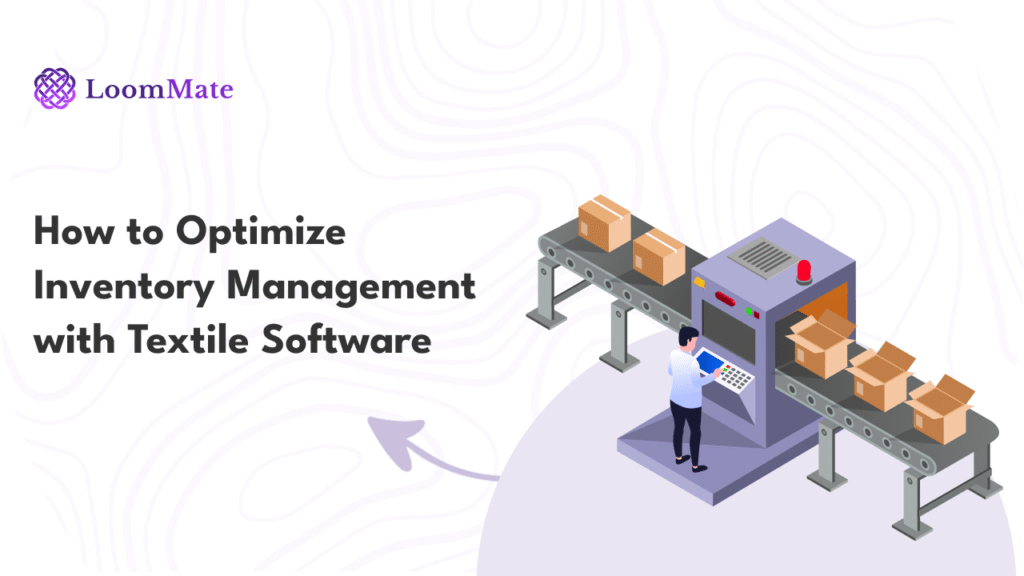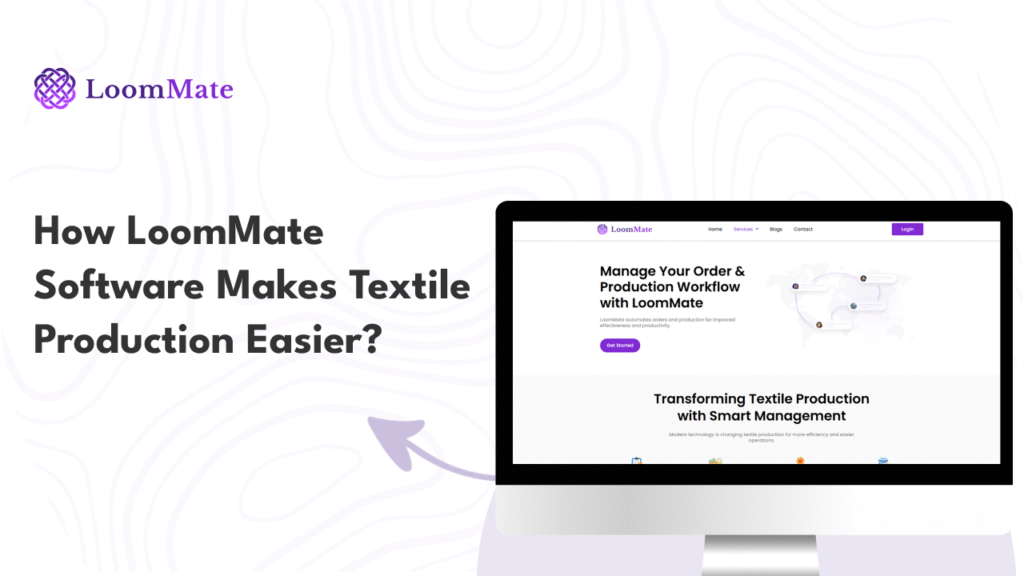Effective inventory management is essential for the textile sector. It helps companies to track their beginnings, finished products, and all intermediate. Textile companies may have problems including overproduction, understocking, delayed orders, or even lost revenue if they lack sufficient stock control. Textile software can be helpful in this situation. Organizations can track inventory movements, keep stock levels, and make better educated choices through using specialized software designed for the textile industry. I will look at in-depth how to employ textile technology for better inventory management in this post.
Understanding Inventory Challenges in the Textile Industry
It’s essential to understand the typical challenges faced in textile inventory management when considering possible solutions. Such these are as follows:
- Managing a wide range of product categories, including yarn, fabric rolls, clothing, and accessories.
- Monitoring objects with varying colors, sizes, textures, and designs.
- Keeping inventory correct across numerous warehouses or locations.
- Maintaining separate records for finished goods and raw materials.
- Maintaining records of the supplies used in manufacturing.
- Managing defective products and refunds.
Accuracy and real-time monitoring are required for all of these duties. Traditional methods, such spreadsheets or manual entry, frequently prove insufficient for efficiently handling these challenges.
Role of Textile Software in Inventory Management
Textile inventory software optimizes a lot of inventory-related operations, which helps companies overcome these problems. These tools are made specifically for the textile industry and offer solutions that correspond to its specific requirements.
Every unit of material that goes through the production cycle can be tracked by the software. It helps with real-time stock level tracking and gives out alarms when levels are too high or too low. It additionally aids in forecasting demand and provides comprehensive reports. It makes it easier for companies to always keep the correct quantity of inventory on available.
Features to Look for in Textile Inventory Management Software
It’s critical to consider features which meet your business needs when selecting a software program for your textile inventory. Here are some important aspects to think about:
1. Material Tracking
The program should make it easier to track supplies that are raw including yarn, thread, dyes, and fabric rolls. It need to be ready to organize them based on lot numbers, color codes, and weight or length.
2. Real-Time Stock Updates
Automatic and immediate updates are ideal. This avoids overproduction or shortages triggered by out-of-date information.
3. Barcode Scanning
Barcode scanning reduces errors and simplifies data entry. Also, it speeds up procedures like product location and taking inventory.
4. Production Integration
The production system should be able to link to the software. This enables the system’s transformation of raw materials into finished goods and the tracking of their usage.
5. Multi-Warehouse Management
The option ought to let you to manage every item in your inventory from a single dashboard even if you store it across various places.
How Textile Software Optimizes Inventory Management
Let’s now examine the particular ways that textile software enhances inventory control. These steps offer an unambiguous description of the method:
Step 1: Automating Data Entry
Manual data entry takes a lot of time and is easy to make mistakes. Automated entries takes the place of manual logs in textile software. The technology instantly changes inventory when items are utilized or received. This speed up operations and lowers errors.
Step 2: Centralizing Inventory Records
All inventory data is stored in one system while utilizing textile software. whatever the the location, it provides an overview of all stock levels. This reduces reports and assists in avoiding duplication.
Step 3: Forecasting Demand
Effective inventory management software may predict future demand through the examination of past sales information. Organizations have the ability to more effectively handle their production schedules and purchases as a result.
Step 4: Reducing Wastage
Material waste is reduced when inventory data are accurate. When materials expire or become outdated, the software notifies the team. In addition, it maintains track of trash and refundable issues separately.
Step 5: Managing Orders
The software enables the management of sales and purchase orders. Order management and inventory levels are connected so that business never promise more than you can fulfill.
Step 6: Inventory Valuation
Textile software may utilize a number of techniques, like weighted average, LIFO, and FIFO, to calculate the value of your inventory. The planning of finances and accounting can benefit from this.
Choosing the Best Inventory Management Software
Inventory software changes from one another. Businesses have to evaluate their options relative to their needs, number of goods, and operational size. Large textile manufacturers are the primary objective of some programs, while small businesses are the primary focus of others.
Software that can be customized to your process is essential if you’re looking for a custom textile inventory management system. This ensures that your unique processes are not affected.
Software that improves accuracy, saves time, and helps in decision-making is the best inventory management system. It must be easy to use and provide help if you come across problems.
LoomMate – A Textile Software Example
The textile program LoomMate, which was developed specifically for inventory and production tracking, is a good example. With abilities including production integration, barcode support, real-time stock updates, and raw material tracking, LoomMate helps textile businesses with handling their inventories. In addition, it enables analytics and reporting, giving businesses with the tools they require for making informed decisions.
By using LoomMate, businesses may boost productivity, decrease manual labor, and stay free of stock-related problems. For textile units of different shapes, it serves as a reliable inventory tracking system.
Benefits of Using Textile Inventory Management Software
Here are some of the main advantages:
- Raw supplies and finished goods are tracked accurately.
- Improved production planning and scheduling.
- Reduction in human error and manual labor.
- More quickly responding to inventory problems.
- Increased control over purchasing and deliveries.
- Improved customer service as a result of timely order fulfillment.
Textile software is an essential instrument for any textile company that wants to improve its inventory management because of these advantages.
Why You Need the Best Inventory Management Solution
There is more to the greatest inventory management system than just keeping track of things. It also helps in forecasting demand, supplier management, and production planning. It develops into the main system that supports many company divisions.
It can be challenging for textile companies to keep precise records with the right inventory software. Transportation, returns, or complaints from customers present difficulties for them. These issues can be addressed and processes are possible with the help of an advanced system.
Conclusion
Effective inventory control is essential to textile companies’ success. Textile technology tracks the flow of substances, simplifies the management of complicated inventory types, and improves making choices. It streamlines procedures, cuts down on waste, and promotes order.
Implementing a textile-specific inventory system can save you time and money, no matter the size of your business. Choose a solution that meets the demands and size of your company.
You can focus on growing the business rather than solving regular problems with stock via professional textile inventory management software.
FAQs
1. What is textile inventory management software?
It is an application made especially to handle raw materials, production inputs, and completed items inventories in textile companies.
2. How does it help in reducing material wastage?
By tracking the quantity of material used in production and informing you when materials are set to expire, the application helps you reduce down on unnecessary waste.
3. Can I use this software for multiple warehouses?
Yes, a great deal of remedies enable controlling numerous warehouses from a single dashboard while keeping records out to the present throughout every location.
4. What makes it different from general inventory software?
The purpose of textile software is to handle demands unique to clothes, such as monitoring by fabric type, color, length, and weight, which might not be accommodated by typical inventory systems.
5. Is it suitable for small textile businesses?
Yes, scalable solutions can be purchased from a lot of software companies. Small businesses may start with simple features and add additional features as they expand.



